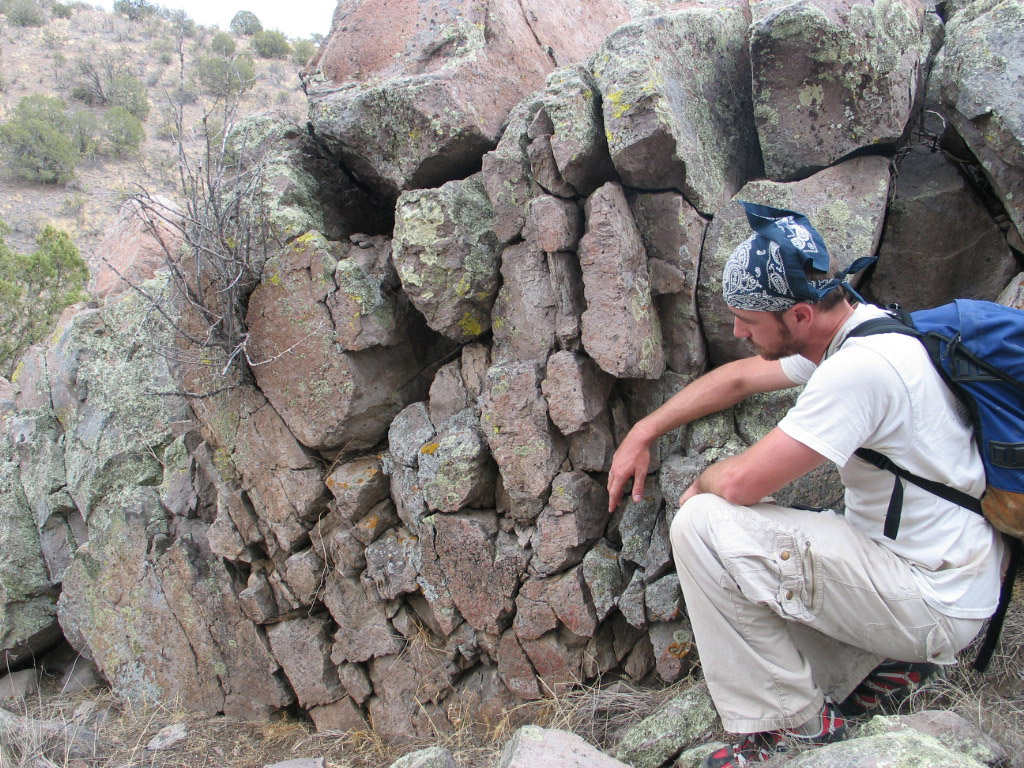Volcanism and tectonics
Many tectonicists approach tectonics from a structural view, and this approach has strong merit. It is equally appropriate, however, to look at how tectonic activity affects volcanism or sedimentation or topography or many other aspects. My favorite is to examine how tectonism can be read in the volcanic record, and how different tectonic settings affect the kind of volcanoes that are built and their style of eruption.
My PhD, from the University of California at Santa Barbara, involved analysis of Jurassic volcanic rocks in southern Arizona and how they predicted what the Early to Middle Jurassic tectonic setting of that area was. Since coming to NAU I have abandoned the Jurassic rocks for strata both older and younger with that tectonic theme plaguing much of it.
Mid-Tertiary volcanism in central Arizona
The story waiting to be told in the Transition Zone of central Arizona, in the Chino Valley area, is very cool.

Beau Tinnin on shear joints in a ?columnar jointed? trachyte lava in Chino Valley
Volcanism in central Arizona occurred in Proterozoic time and not again until about 25 m.y. ago. Between those two episodes the seas went in and out, but more importantly, the subduction stayed well off to the west and southwest (or wasn't there at all). But some other major tectonic events took place in Arizona in middle Tertiary time, specially strong extension and the formation of metamorphic core complexes. The disruption of the crust during core-complex formation must have had an effect on the areas above where a normal crustal profile must once have been. How did that effect things going on at the surface? In this area, I need students interesting in tectonics and petrology, as it's the petrologic signature of the volcanic rocks that will give the clues as to what was going on in the crust as the chemistry of the magma was evolving. I currently have a student working in the Sullivan Buttes. Michael Ketterer (Prof/Chem) has a state-of-the-art ICPMS. Michael Ort also has set up a clean lab which makes doing isotopic work feasible. One student several years ago did some basic chemistry, but now it's time for isotopes and a good look at xenoliths. My student Beau Tinnin (pictured above)'s work is the first in a string of careful geochemical studies that need to be done.
More structurally minded folks might enjoy extensive mapping to see how the evolution of volcanism and faulting are related. Across the Transition Zone, hundreds of square kilometers are either unmapped, or mapped at scales that provide only the most basic information. My own interest is in the volcanic material, but sedimentary strata abound, both volcanogenic and not, and where these rocks are cut by faults several interesting stories wait to be discovered.
Triassic volcanism and tectonics
Another story is waiting to be told in Triassic rocks on and off the Colorado Plateau. This one is mostly hosted in sedimentary rocks, and the story is found on the Chinle page.

